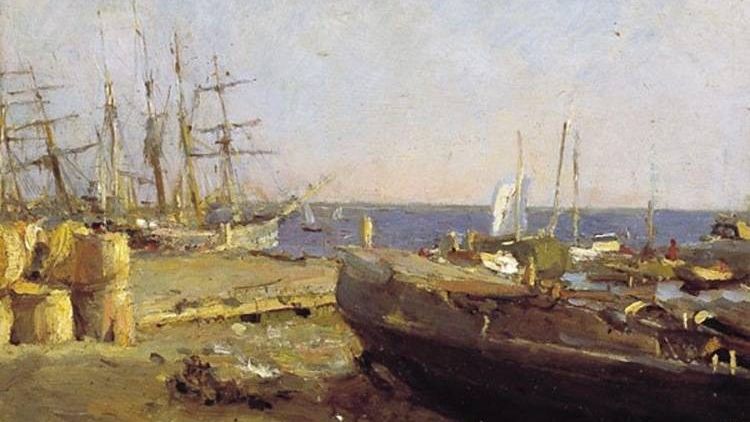The Arctic is not only a harsh climate, strong winds, pack ice, and polar nights, but also Russia’s most important transportation corridor, the Northern Sea Route. The development of this transportation artery is one of the country’s national priorities
The dynamically changing political and military situation in the world forces Russia to search for and develop new transportation corridors. The Northern Sea Route (NSR) project is the most promising.
This transportation artery is designed to connect the northwestern regions of Russia with the Far East, as well as with the countries of the Asia-Pacific region and even the ports of Northwest America. Let us consider the prospects and role of the northernmost transportation corridor in the world.
Geographical significance
The Northern Sea Route shipping route runs along the northern coast of Russia along the seas of the Arctic Ocean (Barents, Kara, Laptev, East Siberian, Chukchi) and partly the Pacific Ocean (Bering Sea).
This location gives the route several advantages. First and foremost, it is safety. The transportation corridor is located entirely within Russia’s territorial waters and exclusive economic zone, there are no wars and piracy, it cannot be blocked for political reasons, as can be done with the Suez and Panama Canals.
The second advantage is the distance. The Northern Sea Route starts in Murmansk, ends in Provideniya Bay in Chukotka, and is 5.6 thousand kilometers long. For comparison, the distance from St. Petersburg to Vladivostok along the NSR is about 14 thousand kilometers. A similar route, but through the Suez Canal, exceeds 23 thousand kilometers, and around the Cape of Good Hope – more than 29 thousand kilometers.
Thus, the Northern Sea Route is the shortest and safest route from Europe to Asia, reducing the distance and travel time by almost half compared to the traditional routes through the Suez and Panama Canals.
Economic importance
The Northern Sea Route is of great importance for the transportation of both Russian cargo and the transit of goods between Europe and Asia. It connects Arctic ports and the mouths of navigable Siberian rivers into a single transportation and logistics system.
In 2023, a record 2.1 million tons of transit cargo was transported along the Northern Sea Route. The main cargoes were oil, iron ore liquified and natural gas. A total of 36.5 million tons of cargo was transported along the NSR last year, which is also a record.
Vladimir Panov, Deputy Chairman of the State Commission for Arctic Development, noted that, according to the agreements signed to date, transportation along the NSR will reach 193 million tons by 2030 and 270 million tons by 2035.
Starting from this year, the navigation on the Northern Sea Route will become year-round, which will increase the efficiency of the northern supply, through which 3.2 million tons of goods are delivered to 25 Russian regions every year.
In addition, Rosatom proposed to use the NSR to export Russian oil previously shipped to the West from Baltic ports. In addition, the NSR could become a route for export shipments of coal, lumber, and grain along river transportation corridors (Ob-Irtysh and Yenisei basins) to Southeast Asian countries.
New icebreaker fleet
The construction of new icebreakers and ice vessels is a key issue for developing and increasing cargo turnover along the Northern Sea Route. It is planned that by 2035, the route will be served by 18 icebreakers to ensure uninterrupted and year-round navigation. By 2030, seven icebreakers of the 22220 series will operate in the water area, three of which are already in operation, and the remaining four are under construction.
The 22220 series icebreakers are the largest and most powerful nuclear-powered vessels in the world, with a capacity of 60 megawatts. Each vessel is 173.3 meters long, 34 meters wide and has a displacement of 33,500 tons. The vessels are equipped with a new-generation RITM-200 twin-reactor power plant, which produces 81,500 horsepower and allows them to reach speeds of up to 22 knots (40.74 km/h). They are also versatile and are capable of operating both at sea and in estuaries, thanks to their dual-draft functionality at 9.03 and 10.5 meters.
Three nuclear-powered ships have already been built under the project launched in 2012 – Arktika, Sibir and Ural – which have already been incorporated into Russia’s nuclear-powered icebreaker fleet. The third and fourth icebreakers of Project 22220 Yakutia and Chukotka are currently under construction – the former is scheduled for delivery in 2025 and the latter in 2026.
Another icebreaker under construction that cannot be overlooked is the nuclear-powered 10510 series icebreaker Leader. This universal vessel has a 120 MW nuclear system and dual-draft functionality. Its width will be 47.7 meters, allowing it to carry large-capacity vessels through the Arctic year-round. The icebreaker is being built at the facilities of the Far Eastern shipbuilding complex Zvezda in the Primorsky Territory.
Infrastructure development
The Northern Sea Route development plan, which was adopted by the government in August 2022, pays great attention to port infrastructure. The plan includes more than 150 measures, including the construction of terminals for liquefied natural gas, gas condensate, oil and coal. Creation of liquefied natural gas transshipment complexes in Kamchatka Krai and Murmansk Oblast, as well as a transit port in Vladivostok.
Development of transportation and logistics hubs in Murmansk and Arkhangelsk, construction of bunkering and maintenance bases in the ports of Tiksi and Dikson. The plan envisages the development of shipbuilding and ship repair production facilities to service ships.
To ensure uninterrupted operation of the NSR, a separate emergency rescue fleet will be created, including 46 vessels and equipping Arctic emergency rescue centers of the Ministry of Emergency Situations with helicopters. As part of the plan, an Arctic satellite constellation will be created to support navigation and monitor climate change.
For the Northern Sea Route to dominate international trade and demonstrate its alternative to the classic routes through the Suez and Panama Canals, Russia will have to do a tremendous amount of work. Already now the estimated total amount of funding for the development of the Northern Sea Route is about €18 billion.
This article by Aleksandr Ditskov was first published on Rossa Primavera News Agency‘s website.




